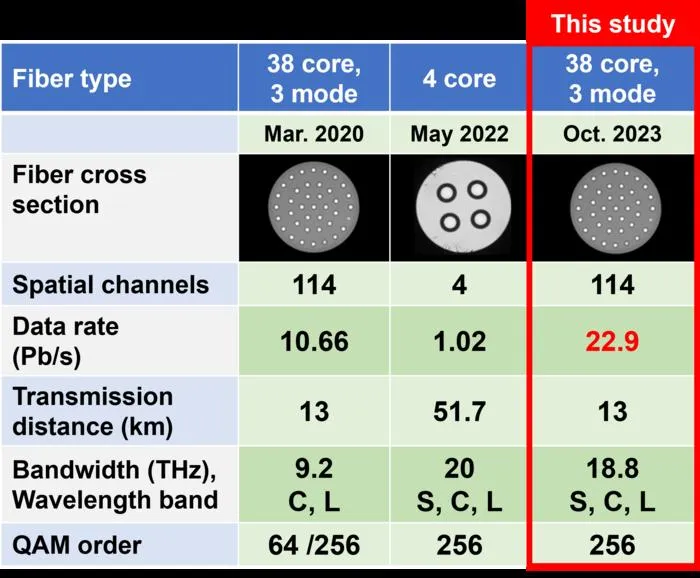A team of researchers from the National Institute of Information and Communications Technology (NICT), Eindhoven University of Technology, and the University of L’Aquila have achieved a groundbreaking transmission that demonstrates the possibility of transmitting up to 22.9 petabits per second (Pb/s) through a single optic cable composed of multiple fibers. This is a significant increase in transmission capacity, as the previous world record was 10.66 Pb/s.
The old record was broken last June, with 1.8 Pb/s by researchers from the Technical University of Denmark (DTU) and Chalmers University of Technology in Gothenburg, Sweden. Then it was broken multiple times in the following months.

The researchers achieved this breakthrough by combining the latest research technologies with Space Division Multiplexing (SDM) and Wavelength Division Multiplexing (WDM). SDM uses multiple multicore fibers and various transmission technologies to work with over 100 spatial channels, which are then combined with multi-bandwidth WDM. The researchers merged this 38-core, three-mode cable through a multi-band compatible MIMO receiver.
Each core is capable of transmitting data between 0.3 to 0.7 Pb/s. With optimized coding, achieving speeds of up to 24.7 PB/s may be possible. This is the first time that different multiplexing techniques have been combined, resulting in a major advancement in data transmission technology.
The research findings were submitted and accepted at Glasgow's 49th European Conference on Optical Communications. Although the technology is ready to be integrated into the existing global optical connection infrastructure, it will require significant upgrades to the current telecommunication centers that use ultra-large capacity optical fibers.
To put it in plain words, this new infrastructure could handle up to three times the amount of data traffic through these cables once deployed, which is 1,000 times more than the currently deployed optic cables. It's also a question of when the new cables and infrastructure might be deployed, as many such records were broken this year, and also which one of these approaches will be deemed most feasible.
Research breakthroughs are crucial to keep up with the high rate of internet consumption worldwide. Establishing records like this with the merit of multiple institutions and researchers, along with the cooperation of several telecommunications players, is likely to encourage investment and quick deployment within the existing ecosystem.

